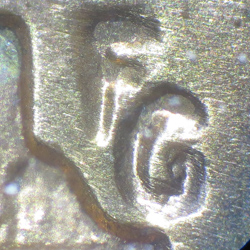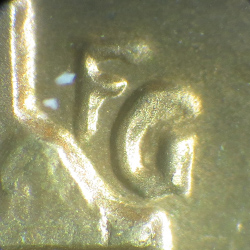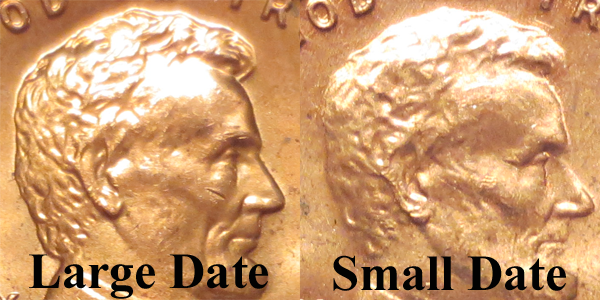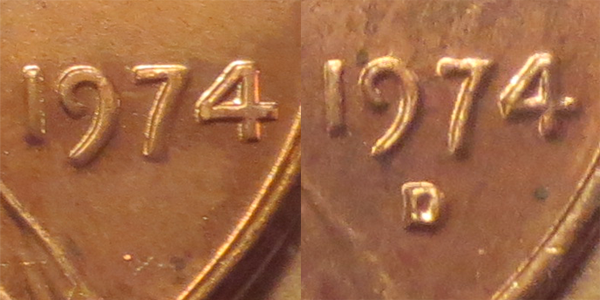
1974 Lincoln Cents
Total Mintage
(Not including test pieces)
| 1974 P | 4,232,140,523 |
|---|---|
| 1974 D | 4,235,098,000 |
| 1974 S | 409,426,660 |
| 1974 S Proof | 2,612,568 |
1974 was the last year that business strike cents would bear the S mint mark. Proof cents minted after 1974 do have the S mint mark.
A new reverse hub was used for cents dated 1973 which showed a larger version of the designer's initials, FG. This was changed again for the 1974 cents at which time the designer's initials were once again made smaller. This makes 1974 a transitional year for the Lincoln cent. This also made the reverse of the 1973 cents a single year design.
1973 Reverse

1974 Reverse

Large and Small Date Varieties
1974 was also a year which also saw a large and small date variety. The mint had made a new master die for the 1974 cents which is doesn't do often, usually only when there is to be a change in the cent or the composition of it. The mint had been looking for a replacement for the Copper cent and even minted a few Aluminum cents in 1974. This may be the reason for the new master die. Later in the year, the mint again decided to make a new master die with a smaller date and less detail than the previous die. The large date is sometimes referred to as a type I and the smaller date as Type II. The differences between the two varieties is not great, nor is either one hard to find in circulation. This may be why they aren't as popular with collectors as some of the other large and small date varieties. Since this difference in size was on the master die itself, the large and small dates were made at all three mints, Philadelphia, Denver, and San Francisco.
The small date will have a lower relief than the large and the cross bar of the 4 doesn't extend as far to the left as it does on the large date. Another noticeable difference can be seen in the details of Lincoln's hair.


Another difference can be seen in the thickness of the numbers in the date as seen in the photo above
1974 Aluminum Cent
When a government mints coins, it likes to make a profit. This profit is called Seigniorage, the difference between the cost to mint a coin and the coins monetary value. In 1973, the mint decided to use a new Aluminum alloy for the 1974 cents. This would save the mint money from the more expensive Copper it had been using. 1,571,167 - 1974 dated Aluminum alloy cents were struck. None of these coins were ever released into circulation. Some of these new Aluminum cents were given to US congressmen, but when the new alloy was rejected, the coins were recalled.
The mint destroyed all examples of the 1974 Aluminum cents, but a couple of examples that were not returned to the mint are known to exist. One is in the Smithsonian Institution. Another example turned up in 2014 dated 1974-D. There is a legal battle over who owns the coin, since they were all recalled for destruction.
1974 Bronze-clad Steel Cent
In the search for a new alloy for the 1974 cents, some test pieces were minted on Bronze-clad Steel planchets. All of these were sent to be destroyed but at least one example turned up in 1994.
Since these were sent for destruction by the US mint, they are considered illegal to own.